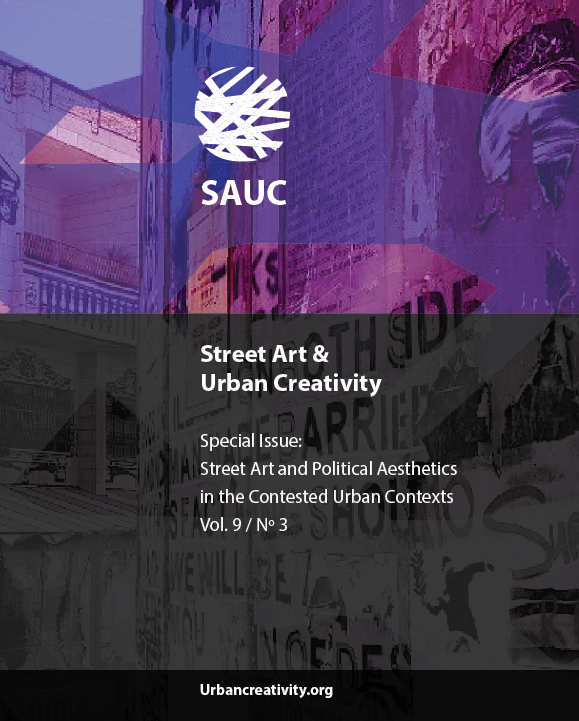Linguistic Landscape of Hong Kong 2019-20 Protests: A mediated Discourse Analysis of Political Graffiti
DOI:
https://doi.org/10.25765/sauc.v9i3.804Keywords:
contentious politics, political graffiti, alternative media, Hong Kong: Anti-Extradition Bill Movement, Linguistic Landscape, Mediated Discourse Analysis (MDA)Abstract
From 2019 to 2020, Hong Kong faced public unrest due to the Anti-Extradition Bill Movement. Political graffiti became a prevalent way to express dissent and different perspectives. This study uses linguistic landscape theory to examine the sociolinguistic and political characteristics of the graffiti that emerged during the protests. The goal is to highlight the counter-narratives that developed during this time. The findings, based on primary data (photos of graffiti) and secondary data (newspaper reports and social media posts on graffiti) collected from August 2019 to February 2020, suggest that protesters aimed to push forward the discourse on Hong Kong as a global economic hub that is succumbing to ‘mainlandization.’ As a result, much of the graffiti was written in English and other global languages. Although many of these messages were insightful and timely, some promoted radical ideas.
Downloads
Global Statistics ℹ️
|
525
Views
|
209
Downloads
|
|
734
Total
|
|
Downloads
Published
How to Cite
Issue
Section
License
Those authors who publish in this journal accept the following terms:
-
Authors retain copyright.
-
Authors transfer to the journal the right of first publication. The journal also owns the publishing rights.
-
All published contents are governed by an Attribution-NoDerivatives 4.0 International License.
Access the informative version and legal text of the license. By virtue of this, third parties are allowed to use what is published as long as they mention the authorship of the work and the first publication in this journal. If you transform the material, you may not distribute the modified work. -
Authors may make other independent and additional contractual arrangements for non-exclusive distribution of the version of the article published in this journal (e.g., inclusion in an institutional repository or publication in a book) as long as they clearly indicate that the work was first published in this journal.
- Authors are allowed and recommended to publish their work on the Internet (for example on institutional and personal websites), following the publication of, and referencing the journal, as this could lead to constructive exchanges and a more extensive and quick circulation of published works (see The Effect of Open Access).













